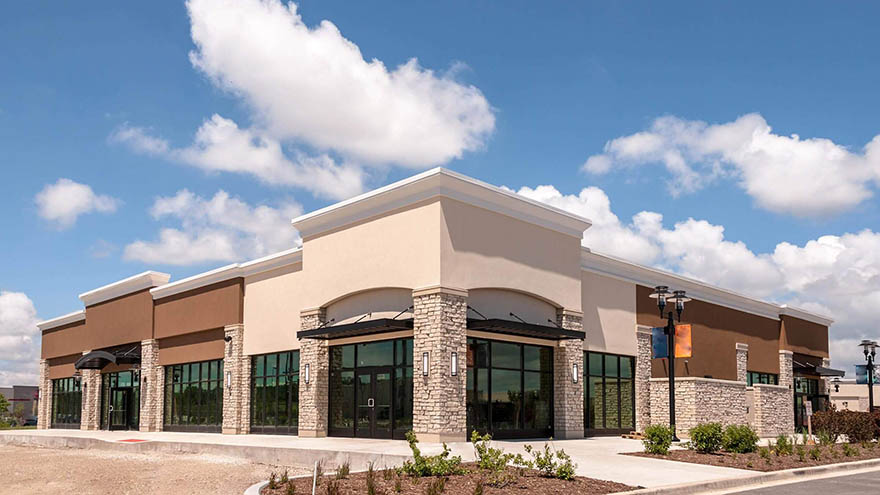What is a 1033 Tax Exchange?
A 1033 tax exchange occurs when an investor’s property must be exchanged for another real estate asset due to natural disaster, condemnment or threat of condemnment, or seizure by eminent domain. Section 1033 of the Internal Revenue Code allows for exchange of like kind property and the deferral of capital gains tax.
The 1033 exchange, similar to the 1031 exchange, allows an investor to defer capital gains taxes while relinquishing control of a property held for business or investment purposes.
Both tax mitigation strategies offer investors strong alternatives to taxable transactions, in which capital gains taxes can exceed 20--30% of capital gains (use our capital gains tax calculator to estimate yours).
The 1031 exchange, which allows an investor to defer capital gains taxes by selling investment property and reinvesting the proceeds in a like-kind asset, is subject to a number of strict requirements and a relatively short timeline that the 1033 exchange is not. A 1033 exchange becomes an option for an investor who has been forced to relinquish their property by eminent domain or destroyed in a natural disaster and covered by insurance.
A 1033 exchange is similar to a 1031 exchange in certain regards. They both require reinvestment of proceeds into like-kind real estate to gain the benefits of the exchange. However, a 1033 does not have as strict of timing requirements as a 1031.
This article answers the following questions:
- What are the primary benefits of a 1033 exchange?
- Do 1033 replacement properties have to be like-kind?
What are the primary benefits of a 1033 exchange?
Cash Out Tax-Free
Unlike the 1031 exchange requirements, the 1033 exchange requirements do not constrain an investor to both reinvest at least their net equity amount while maintaining at least the same debt leverage ratio. In a 1033 exchange, an investor only needs to reinvest the total value of the relinquished property. This provides flexibility that an investor could take advantage of. For example, an investor with $500,000 in equity and a 50% loan-to-value ($1 Million total property value) could acquire investment property that is also worth $1 Million, but has a 75% loan-to-value. This would leave the investor with $250,000 of cash in the bank that is not subject to capital gains taxes.
Qualified Intermediary Not Required
In a 1031 exchange, the use of a Qualified Intermediary is necessary for the success of the transaction as the investor is to never take physical or constructive receipt of the funds from the sale of their relinquished property. However, with a 1033 exchange, there is no requirement to use a Qualified Intermediary. The investor may take receipt of the funds and place them into personal bank, money market, or investment accounts.
2–3 Year Timeline
Unlike a 1031 exchange, the 1033 exchange allows investor a significant amount of time to complete their exchange. Instead of 45 and 180 day requirements, the 1033 exchange investor has anywhere from 2-3 years from the date of the forced conversion to close on a replacement property. There is no identification period as there are no requirements for an investor to identify. This allows a 1033 investor to select any number of properties or investments to complete their exchange. The 1033 exchange is finalized when a purchase takes place and the title is passed to the investor.
Funds May be Invested in the Short-Term
The funds may also be used for other short term investments before being used to complete the 1033 exchange. Note well, however, that if an investor suffers any losses from investment during the interim period between the conversion and the exchange, they may not offset the capital requirement of the 1033. The 1033 exchange must utilize at a minimum the total value of the conversion. Therefore, most investors keep 1033 funds away from risky investments and prefer to use safer methods of keeping their capital protected until they can complete their exchange.
Do 1033 replacement properties have to be like-kind?
Yes. To comply with requirements the properties must be like-kind and have similar characteristics as an investment. This does not mean that they have to be the same asset class, but it does mean that both properties must be held specifically for investment purposes. To be considered held for investment purpose, a property must not be used for personal use or vacation use, most are used for a business purpose and generally rental properties or commercial real estate. To be considered like-kind a property must simply be held for the same purpose; as an investment. It must be real property that is located in the United States to be compliant with 1033 guidelines. In addition 1033 investors have the option to select 80% control of a corporation that owns replacement property rather than using the like-kind rule for their exchange.
The 1033 is a great tool that allows investors to complete a tax deferred exchange without the use of a QI and under relaxed timing. This can be a blessing and a curse. If an investor waits too long to find a replacement property, there may not be any property available that is suitable for their needs. The sense of security in a relaxed timeline can be lost quickly if an investor is not diligent about finding new investment property. It is recommended to use the allotted time for a 1033 to make sure that an investor finds a great property, however investors should be proactive in using their capital effectively. Investors should research potential investments thoroughly and make sure that any potential investment is one that is suitable to fit their objectives.

